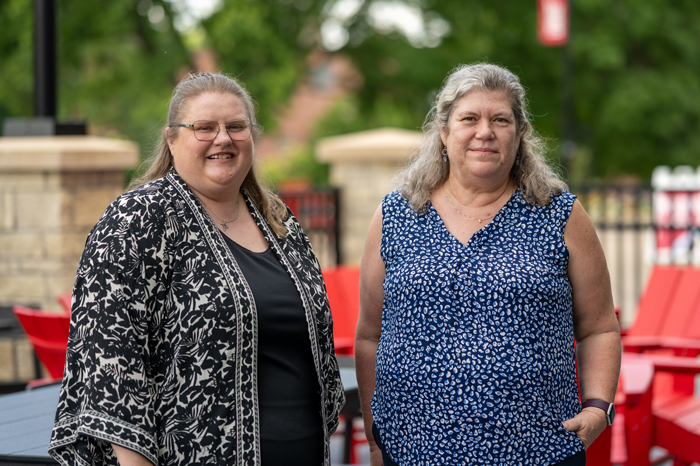Why are these youth vulnerable to trafficking and other crises?
Crystal Meier: Many of the youth that we serve have no support system as they have come from group homes, residential treatment or multiple foster homes. The lack of preparation skills and the large drop-off in services means these youth go from day-to-day assistance in foster care to a program with monthly check-ins and few resources. Programs such as Workforce’s Independent Living and Anti-Human Trafficking give them mentorship and assistance. But with caseloads of thirty or more clients, case managers do not have the time to drop everything when an immediate need comes up. Increasing our team’s capacity to staff and answer the phone calls coming in through the warm line will help us address immediate needs and should greatly improve outcomes.
How will this grant support the youth you serve?
Crystal Meier: Our plan is to create a resource directory that can be used by the warm line and for case managers to tap into crises quickly, to resolve the main issues in a timely way. We will also monitor the number of crises; we expect that number to decrease over the next three years because staff will have more time for the proactive, prevention work. We think it will also improve staff retention since they will not be stretched with triaging multiple crises. Better job retention helps the kids because whenever we have staff turnover, we lose youth participation.
How does “warm line” differ from a hotline?
Crystal Meier: Our warm line will follow participants from the time of the crisis to the time they resolve their issues. For example, we had a young person who was ousted from her lodging in the middle of the night. We put them up for a four-night stay in a hotel. During this time, the primary case worker was able to secure a new apartment and an outside agency to provide a housing voucher for the next six months. The work between the warm line worker and the case manager meant the young person did not have to go without shelter that night. Case managers and the warm line worker followed the young person until there was stability and resolve in the case. The warm line is there to resolve, assist, troubleshoot and report. The case manager is there to prevent, teach and anticipate potential issues.
How is this project progressing?
Crystal Meier: We are working on the training and getting word out about the project. On intake, we give the clients a card with a QR code and a number to put in their phones. In the first three months, we have helped youth navigate housing crises, meet basic needs and handle job layoffs. The ability to help our clients stabilize and quickly get the resources they needed minimized these crises.
What is encouraging about the approach?
Crystal Meier: So far, having an assigned case manager each day to answer the warm line, and a lead crisis worker for each contact, has helped us develop a new community partnership model and is creating better case management approaches.
How will this project help meet the long-term goals of addressing this issue?
Crystal Meier: Our case management and crisis response model and new resource directory give us more capacity to serve such a wide part of Wisconsin. We’re also looking for long-term funding to keep this approach going. We believe this model has the potential to create a better practice on how to help youth in rural Wisconsin.
Photo by Pat Deninger, UW River Falls


